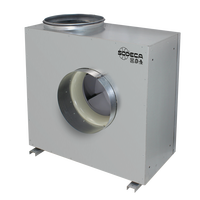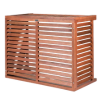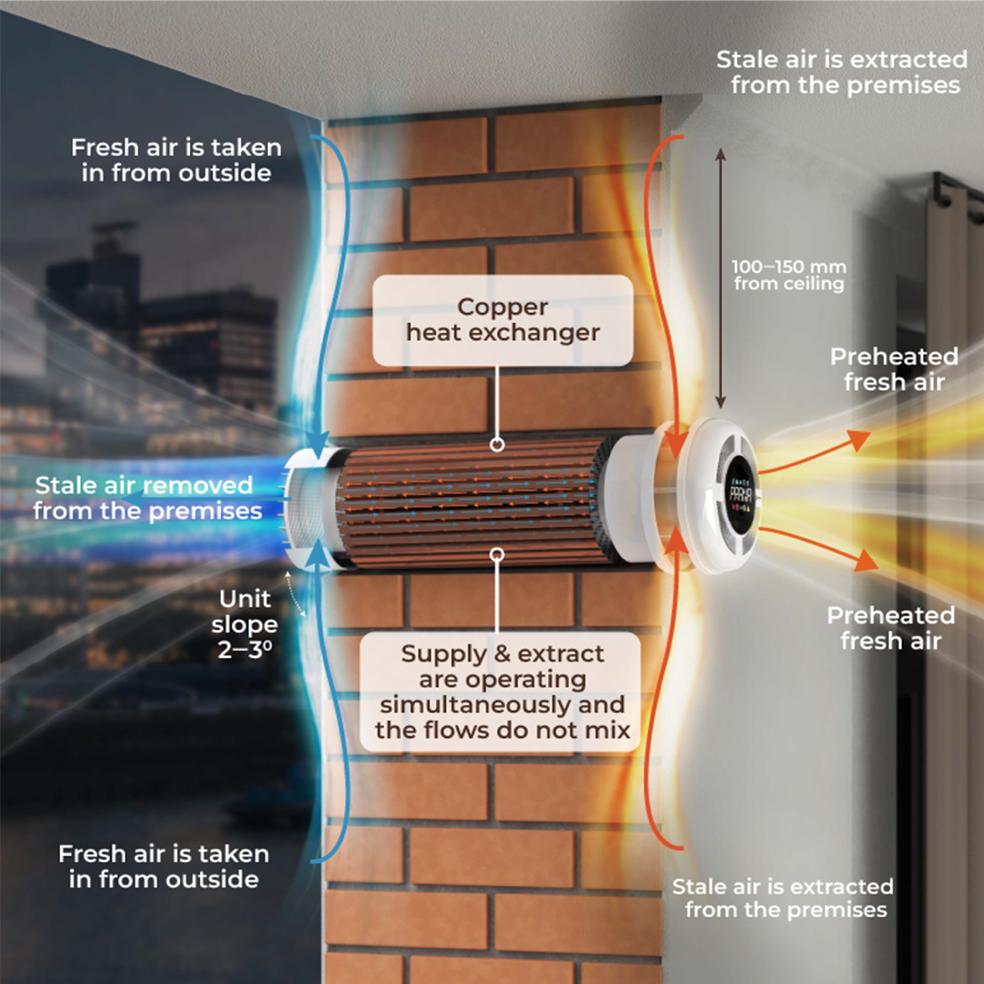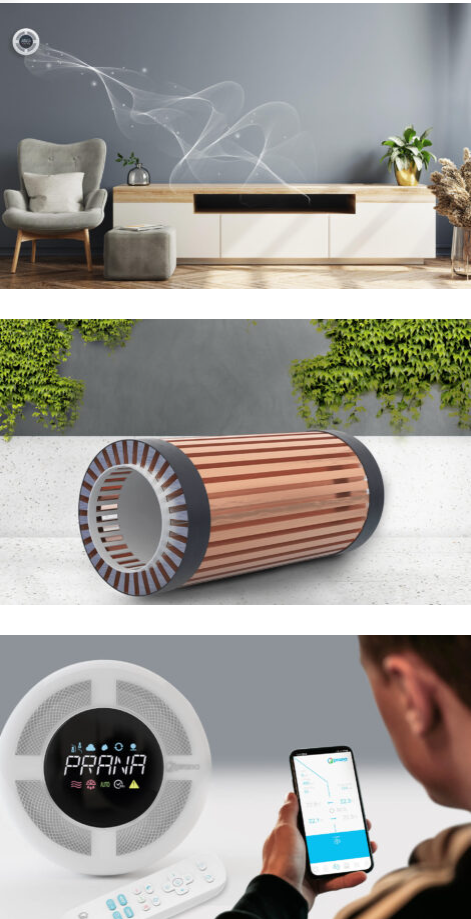The principle of operation of the supply and exhaust ventilation system with a recuperator
How does this work?
- Outdoor air intake: The supply unit fan draws in air from the street.
- Filtration: The air passes through filters to remove dust and other contaminants.
- Passage through the recuperator: The purified air enters the heat exchanger of the recuperator, where it transfers part of its heat to the exhaust air leaving the room.
- Supply air heating: The heat exchanger transfers heat to the supply air, which is heated to a comfortable temperature.
- Entering the premises: Heated air is supplied to the room and exhaust air is discharged outside.
Why is this important?
Traditional natural ventilation is not always effective, especially in modern buildings with airtight windows. In such cases, the recuperator helps:
- Keep warm: Reduces heat loss during ventilation, saving on heating costs.
- Reduce costs: Allows you to reduce energy costs by ensuring efficient use of heat.
- Provide comfort: Maintains stable temperature and humidity in the room.
Advantages of recuperators
1. Energy efficiency
Recuperators allow the use of heat that would otherwise be lost, thereby reducing the need for additional air heating. The efficiency of recuperators can reach up to 90%, which can significantly reduce heating costs.
2. Improving the microclimate
Systems with recuperators ensure uniform distribution of heat and fresh air, which helps create a comfortable indoor microclimate. This also helps maintain stable humidity levels.
3. Reduce energy consumption
By reducing the need for additional heating and air conditioning, recuperators help reduce overall energy consumption, which is an important aspect in the face of rising energy prices.
Places of use
Residential premises
In apartments and country houses, recuperators help maintain comfortable temperature and humidity, reducing heating and air conditioning costs.
Offices
For office premises, recuperators provide fresh air and maintain an optimal microclimate, which helps increase employee productivity and improve overall air quality.
Commercial buildings
In stores, restaurants and other commercial facilities, heat exchangers help effectively manage temperature and humidity, ensuring comfort for customers and employees.
Swimming pools and wet areas
For areas with high humidity levels, such as swimming pools, it is preferable to use heat exchangers with aluminum heat exchangers, which can withstand such conditions without the risk of freezing.
Types of recuperators
Plate recuperators
- With aluminum heat exchanger: Cheaper, but can freeze at low temperatures, which reduces their effectiveness.
- Made of plastic: Better heat retention than aluminum, but also have their limitations.
- From cellulose: High efficiency and moisture retention, but not suitable for wet areas.
Rotary recuperators
- Operating principle: The rotary heat exchanger rotates to transfer heat between air streams. High efficiency, but high cost and frequent maintenance.
How to choose a recuperator
When choosing a recuperator, consider the following factors:
- Performance: Make sure the system is suitable for the size of your room.
- Heat exchanger type: Select the appropriate type depending on the operating conditions (humidity, temperature).
- Energy efficiency: Evaluate the efficiency of the device and how this will affect your costs.
- Quality and guarantee: Check certificates and warranty conditions.
As a result, choosing the right heat exchanger will allow you to ensure effective ventilation, energy savings and a comfortable stay in your home or office.
Install a recuperator and start saving on heating today! Improve the climate in your home or office, retaining heat and reducing costs. Order an effective ventilation solution right now!














